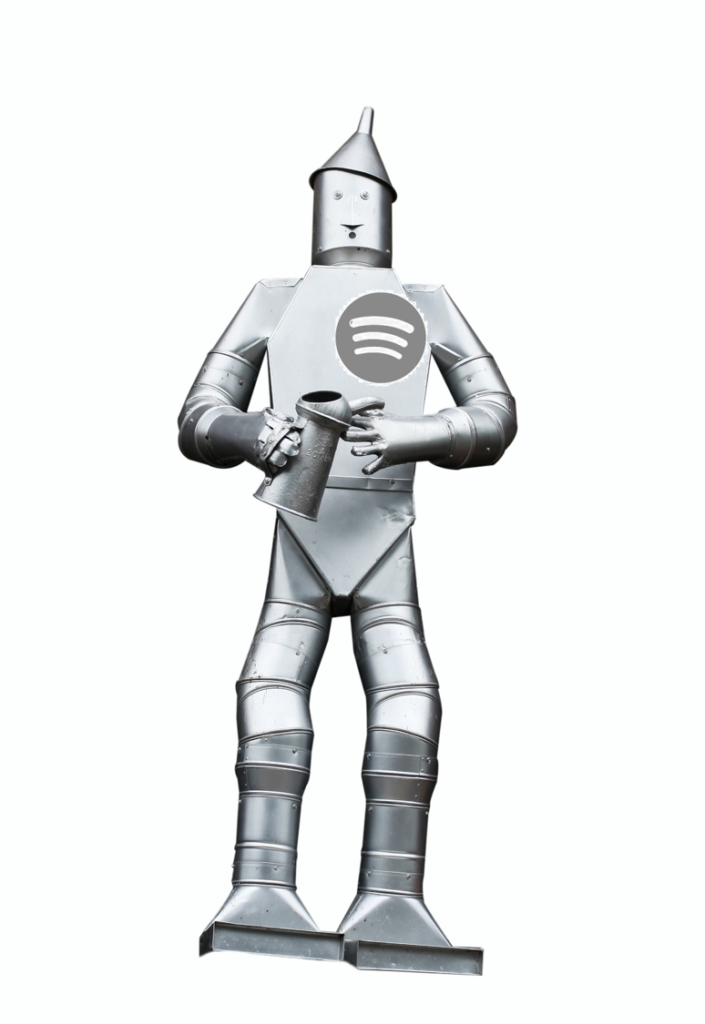
With all the talk about Big Data, the simple truth is that numbers can be awfully dull. I should know – I work with them a lot, whether staring at Nielsen numbers or the research we generate through our Techsurveys and other projects.
Analysis paralysis creeps in a lot these days, especially the case when you’re looking at programmatic audio advertising buys. They may be easy and scalable to make, but that doesn’t change the reality that for marketers, there’s a bad aftertaste.
That’s not my opinion. It’s the candid thinking of Spotify’s global head of automation sales, Julie Clark. The Drum’s Andrew Blustein recently wrote that in an address to industry professionals, Clark admitted that it’s easy to let the metrics outweigh marketing creativity. In radio, we know all about that. The famous phrase, “Live by the book, die by the book,” must have been coined by a radio station rep whose luck finally ran out.
There’s more to marketing than simply pointing at rankers, downloads, and other dry metrics. But the intoxication of all that data and its end product, Artificial Intelligence, is awfully potent. All the attribution, accountability, and ROI in the world cannot replace a multi-media creative campaign.
But over-reliance on data is what happens when the left brainers drown out the creatives. This is happening a lot in the media world these days. Creativity, innovation, and energy shouldn’t just be reserved for product content – it should apply to the sales/marketing process as well. When reps lean so heavily on algorithms over engagement, something gets lost in the marketing process.

For Spotify – and very likely other digital brands – an over-emphasis on data leaves a lot on the table. As Clark noted, “We’ve focused so much on data analytics, and we forget about the marketing part of it and the creative aspect of it. I think there’s a huge opportunity for us there.”
And Clark’s play is there’s upside to working closely with the creative team of the ad partner. That’s a good goal for a pureplay like Spotify. But in the case of radio, engagement, fun, community, and personality should always be a part of the sales and marketing equation – if and only if they’re used creatively and intelligently.
Back when I programmed WRIF, the sales/programming abyss may as well have been like the separation of church and state. My job was to get the ratings; salespeople were tasked with generating the revenue. While we interfaced with each other from time to time, the interplay was often forced and combative, usually under a dark cloud of suspicion and mistrust.
In radio stations today, that dysfunctional relationship is a non-starter. It’s in every PD’s interest to rack up as much revenue as possible – while  protecting the product. It has come down to the ability to effectively sell and market the brand.
protecting the product. It has come down to the ability to effectively sell and market the brand.
And so back to Spotify’s need to diversify its sales and marketing efforts. Radio stations already have that task handled – at least in theory. That’s because they have the ability to offer personality, presence, grassroots knowledge, and energy, along with the conventional weaponry of a loyal audience who access radio content via over the air, streams on computers and apps, smart speakers, social media, websites, and other outlets – like branded podcasts.
With all due respect, Julie Clark, Spotify’s got a long way to go. Like the digital Tin Man, it has no personality, no community presence, no soul.
But her message is clear – be creative and use all the tools in the tool kit.
To that end, broadcast radio has its own marketing challenge: to go beyond the numbers, get creative with integrated packaging, and help its advertisers generate revenue, store traffic, brand-building, and results.
There’s more to marketing than data.
- Can Radio Afford To Miss The Short Videos Boat? - April 22, 2025
- Media And Technology In 2025: Believe It Or Not! - April 18, 2025
- In Radio, You Just Never Know - April 17, 2025




Leave a Reply